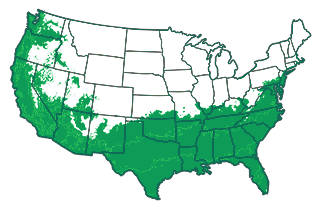About
Conadria Fig trees are renowned for their luscious fruit and adaptability in a variety of culinary applications.How tall does a Conadria Fig tree grow?
Conadria Fig trees typically reach a mature height of 12 to 20 feet, depending on the growing conditions and pruning practices. Under optimal conditions, their wide spreading branches create a beautiful canopy, adding aesthetic charm to any garden or orchard. Their manageable size makes them suitable for both residential gardens and larger-scale plantings.How long does a Conadria Fig tree live?
With proper care, Conadria Fig trees are known to live and produce fruit for several decades. Their longevity can be attributed to robust growth habits and adaptability to various climates, provided they are protected from extreme cold. Regular maintenance and favorable growing conditions can extend the tree's productive lifespan significantly.How fast do Conadria Fig trees grow?
Conadria Fig trees exhibit moderate growth, typically increasing in size by 12-24 inches per year under ideal conditions. This growth rate allows the tree to establish a sturdy structure while developing its fruiting potential. Factors such as climate, soil quality, and care practices can influence the annual growth rate.How to care for Conadria Fig trees?
Caring for Conadria Fig trees involves consistent watering, particularly in dry periods, to ensure they remain healthy and productive. They benefit from regular feeding with a balanced fertilizer in the early spring to support growth and fruit development. Mulching around the base helps retain soil moisture and regulate temperature, fostering robust root growth. Protecting the trees from extreme cold and pests is essential for maintaining their health and productivity over the years.When to prune Conadria Fig trees?
Pruning Conadria Fig trees is best done during the late winter or early spring when the trees are still dormant, and before new growth begins. This timing helps minimize stress on the tree and directs energy towards producing new fruiting wood. Avoid pruning during the active growing season to prevent sap loss which can attract pests.How to prune Conadria Fig trees?
To prune Conadria Fig trees, start by removing any dead, damaged, or crossing branches to improve air circulation and sunlight penetration. Thin out overcrowded branches to promote healthy fruit production and shape the tree to allow for easy maintenance and harvesting. Ensure that cuts are made cleanly at a slight angle, just above a bud or branch joint, to encourage healthy regrowth.Why do we like Conadria Fig?
Conadria Fig trees are loved for their complex flavor profile, making them both a delightful snack and a versatile ingredient in various culinary dishes. The tree itself is relatively low maintenance and rewards gardeners with its abundant, sweet fruit, embodying the perfect blend of indulgence and ease.| Mature Size | 12–20 ft tall × 12–20 ft wide |
| Sunlight | Full (6-8 hours) |
| Spacing | 12–18 ft |
| Harvest Season | July to September |
| Pollination | Self-pollinating |
| Uses | Fresh eating, preserves, baking |
| Water Requirements | Moderate; moist, well-drained soil |

Growing Zone: 7-10
To plant Conadria Fig trees, dig a hole twice as wide and as deep as the root ball, ensuring the tree is level with the surrounding soil. Gently tease out the roots if they are compacted, and set the tree in the prepared hole, filling back with soil and patting it down firmly. Water thoroughly to help settle the soil and begin establishing the root system.
The best time to plant Conadria Fig trees is during the spring, after the last frost has passed, to allow the roots to establish before the heat of summer. In regions with milder winters, planting can also occur in early autumn, giving them time to settle before winter. Avoid planting during extremely hot or frosty conditions to prevent stress to the young tree.
Ensure adequate spacing of 12-18 feet between Conadria Fig trees to allow for their mature width, enabling proper air circulation and sunlight penetration. Sufficient spacing prevents overcrowding, reducing the risk of disease and promoting healthy growth. This careful arrangement facilitates easier maintenance and harvesting access.


